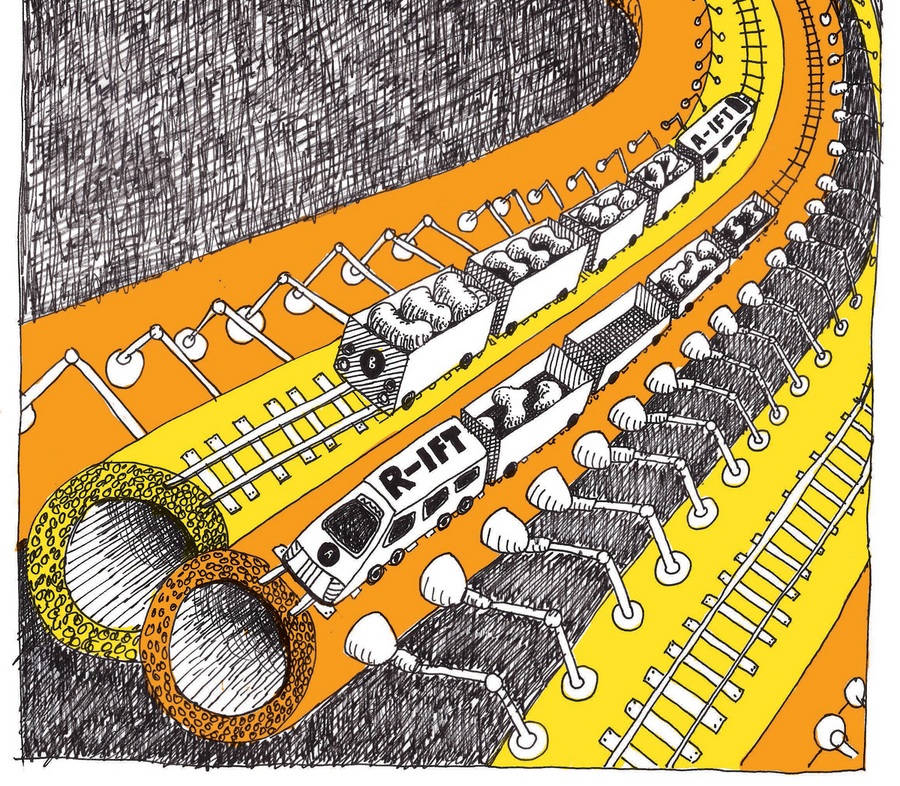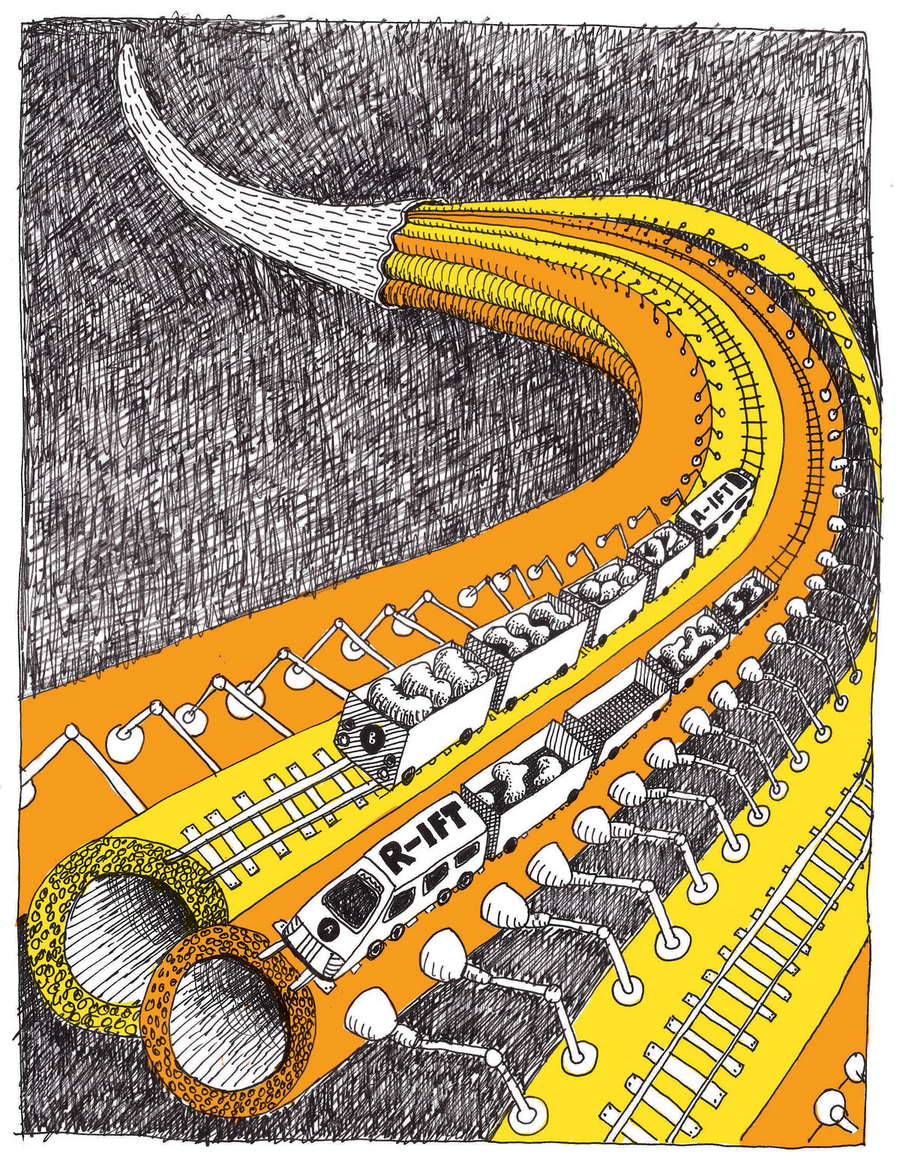

Most cells use an antenna-like structure, the cilium, to move, to sense their environment, and to signal to other cells. During each cell cycle the cilium undergoes rapid assembly and disassembly, which is enabled by a bidirectional train-like transport system called IFT (intraflagellar transport). In a healthy cell, IFT happens collision free and without traffic jams, but if IFT fails, various human pathologies arise. How IFT coordinates the cargo trains within the cilium is an unanswered question for many years. The research group of Gaia Pigino at the MPI-CBG has now published an elegant study in Science that gives a conclusive answer to this long-standing question: The cell prevents collisions by placing trains going in opposite directions on different rails.
This study addresses a long-standing question in cell biology: How is the transport machinery in the cilium organized in order to achieve fast, efficient and reliable bidirectional transport of ciliary building blocks?
It is known that microtubule-doublets are specialized structural components common to all kind of cilia and that they are used as tracks for the transport system. However, thus far, the function of their intriguing doublet geometry, which comprises a full A-tubule and an incomplete B-tubule, has not been understood.
To visualize how IFT trains transport components up and down the cilium, the research team developed a novel time resolved correlative fluorescence and 3D electron microscopy method, allowing them to analyze intracellular processes at sub-nanometer resolution without loosing the dynamic information obtained during live-cell imaging. Trains going in opposite directions turn out to be placed on different unidirectional rails located on each microtubule-doublet, enabling them to zip up and down along the same doublet without collisions or traffic jams. Trains going towards the assembly site use one track (the B-tubule), while the returning ones use the other (the A-tubule). Hence, each doublet is a collision free double track railroad system.
This result gives, for the first time, an answer as to why the cilium is built out of microtubule doublets, instead of single microtubules, as in the rest of the cell. This insight will change the textbook description of a key cell compartment, the cilium, and influence the way we think about other active transport systems in biology. Additionally, the newly developed correlative microscopy method might be key to other investigations where fast processes in small cell compartments are under investigation.
Ludek Stepanek, Gaia Pigino:
Microtubule doublets are double-track railways for intraflagellar transport trains
Science, 352 (6286) 721-724 (2016)